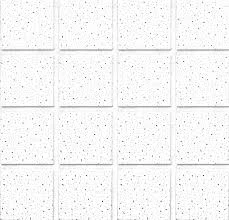- Afrikaans
- Albanian
- Amharic
- Arabic
- Armenian
- Azerbaijani
- Basque
- Belarusian
- Bengali
- Bosnian
- Bulgarian
- Catalan
- Cebuano
- Corsican
- Croatian
- Czech
- Danish
- Dutch
- English
- Esperanto
- Estonian
- French
- German
- Greek
- Hindi
- Indonesian
- irish
- Italian
- Japanese
- Korean
- Lao
- Malay
- Myanmar
- Norwegian
- Norwegian
- Polish
- Portuguese
- Romanian
- Russian
- Serbian
- Spanish
- Swedish
- Thai
- Turkish
- Ukrainian
- Uzbek
- Vietnamese
nov . 07, 2024 07:50 Back to list
Understanding Ceiling Grid Systems for Effective Space Design and Aesthetics
The Importance of a Ceiling Grid in Modern Interior Design
In the realm of interior design, every element plays a significant role in crafting the ambiance, functionality, and aesthetic appeal of a space. Among these elements, the ceiling grid—often overlooked—emerges as a vital component that can enhance both the visual and practical aspects of a room. With the increasing popularity of open spaces and modern designs, understanding the implications and benefits of ceiling grids is essential for architects, designers, and homeowners alike.
What is a Ceiling Grid?
A ceiling grid, typically made of metal or aluminum, serves as a framework for suspending ceiling tiles or panels. It consists of a network of horizontal and vertical strips that create a modular system. This grid can accommodate various types of ceiling materials, including acoustic tiles, drywall, and even decorative panels. The modular nature of the ceiling grid allows for easy installation, modification, and maintenance, making it a preferred choice in both residential and commercial spaces.
Functional Benefits
One of the primary advantages of a ceiling grid is its functional versatility. For example, in commercial settings, the ceiling grid supports not just the aesthetic elements but also the extensive network of utilities including lighting, HVAC systems, and fire safety equipment. The ability to conceal wiring and ducts allows for a clean and organized look, which is crucial in professional environments.
In residential spaces, a ceiling grid can play a significant role in soundproofing and insulation. Acoustic ceiling tiles are often installed within the grid to reduce noise transmission between rooms, making it an ideal solution for apartments and homes with multi-functional spaces. Additionally, the grid can help improve energy efficiency by allowing for the installation of effective insulation materials.
Aesthetic Appeal
main t ceiling grid

Beyond functionality, ceiling grids contribute greatly to the aesthetic character of a space. They can help create visual interest and depth, particularly in large rooms where a flat ceiling might feel monotonous. Designers have the option to use various materials and finishes on the tiles, ranging from sleek and modern to ornate and traditional, allowing for seamless integration with the overall design theme.
For instance, in modern urban lofts, exposed ceiling grids made from industrial materials can add an edgy, contemporary feel. Conversely, in homes that lean towards classic styles, decorative tiles within a painted grid can enhance the elegance of the interior. Furthermore, innovative design approaches, such as incorporating LED lights within the grid, can create striking visual effects that redefine a space.
Installation and Maintenance
The installation of a ceiling grid is generally straightforward, though it requires careful planning to ensure that the framework aligns with other architectural elements of the space. Most ceiling grids can be installed without the need for professional assistance, making it an achievable DIY project for homeowners looking to refresh their interiors.
Maintenance of ceiling grids is equally manageable. The modular nature of the system allows for easy replacement of damaged tiles or the movement of utilities without extensive disruption. Regular cleaning of the grid and tiles can also help maintain a fresh and appealing look.
Conclusion
Ceiling grids are often undervalued in the field of interior design, yet they offer a unique combination of functionality and aesthetics. By providing an effective support system for various ceiling materials, they enhance the visual appeal and acoustic performance of a space while also concealing critical utility elements. As design trends evolve towards open and flexible spaces, the role of the ceiling grid will only become more significant.
Whether you are an architect, a designer, or a homeowner, appreciating the value of a ceiling grid can lead to more innovative and sustainable design choices. It is vital to recognize that every element, no matter how seemingly insignificant, has the power to shape our environments and experiences. So next time you look up at a ceiling, consider the intricate possibilities a ceiling grid has to offer—it could just be the transformative feature your space needs.
-
Transform Interiors with PVC Gypsum Ceiling: A Stylish, Durable, and Moisture-Resistant SolutionNewsMay.19,2025
-
The Smart Interior Upgrade: Discover the Durability and Versatility of Gypsum Ceiling Access Panel SolutionsNewsMay.19,2025
-
The Smart Choice for Interior Design: Discover the Value of PVC Gypsum Ceiling SolutionsNewsMay.19,2025
-
Mineral Fiber Ceiling Tiles: The Smart Blend of Performance and AestheticsNewsMay.19,2025
-
Mineral Fiber Ceiling Tiles: The Superior Choice Over Gypsum for Sound and Fire SafetyNewsMay.19,2025
-
Mineral Fiber Ceiling Tiles: Eco-Friendly Strength and Style for Every CeilingNewsMay.19,2025







